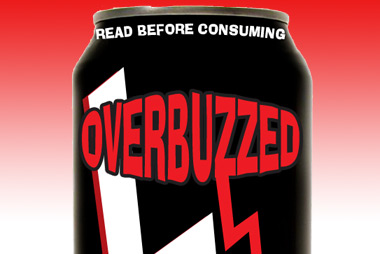Since 14-year-old Anais Fournier died of caffeine toxicity late in 2011 after downing two 24-ounce cans of Monster within 24 hours, there’s been a flurry of investigation into the composition and health effects of energy drinks.
It turns out that Red Bull, a product that was early in the field and is still omnipresent, is relatively mild in terms of its caffeine content, checking in with 152 mg of caffeine per 16-ounce can compared to 200 mg of caffeine in 16 ounces of Rip It. Red Bull’s 80 mg of caffeine per 8.4-ounce can compares favorably to the 85 mg in an average 8-ounce cup of brewed coffee.
But compared to soda, all energy drinks, including Red Bull, are pounding with caffeine. The difference isn’t slight; it’s exponential. According to the Walter Reed Army Institute of Research, the source of figures published in January in the Journal of the American Medical Association:
– 2 12-ounce cans of Coca Cola contain 70 mg of caffeine (35 each), while a 24-ounce can of Monster punches you out with 240.
– 20 ounces of Pepsi MAX have 115 mg of caffeine; a 2-ounce Rip It Shot packs 100.
– 12 ounces of Dr. Pepper have 42 mg of caffeine; 12 ounces of Red Bull have 114.
Makers of Monster and other energy drinks insist that no untoward health effects have been definitively linked to the drinks, and in the U.S., researchers don’t claim as yet that there are “definitive” links.
But there is such a thing as caffeine poisoning. And there’s a lot that consumers—especially those in their teens and younger—should know about these drinks, because they’re not regulated by the federal Food and Drug Administration. That’s because they’re marketed as supplements rather than drugs. One reason they’re classified as supplements is that some contain natural substances, some of which—such as guarana and ginseng—augment the effects of caffeine.
Yet because they are officially “supplements,” the amount of caffeine in each drink is not necessarily listed on its label. Caffeine pill packaging, by contrast, displays the amount of caffeine in each dose.
German researchers studying energy drinks since 2002 have linked them to palpitations, hypertension, liver damage, seizures, kidney failure and heart failure. In the United States, the number of caffeine toxicity cases soared from 1,128 in 2005 to 13,114 in 2009, years that saw a significant swing in consumption from soda to energy drinks (2.3 billion were consumed in 2005; by 2010, the number had more than doubled to 6 billion).
Even aside from potential overdoses of caffeine, energy drinks spawn other problems, say researchers and physicians. Many are loaded with sugar, the major culprit in the current epidemic of obesity and diabetes.
And they are unhealthy substitutes for natural ways of maintaining energy levels. About two-thirds of those who reach for Red Bull or Monster to keep a fast-paced lifestyle going are between 13 and 35 years of age. During those years, people should be keeping up their energy by eating food rich in vitamins and other micronutrients, and exercising, which will be beneficial for their health in later life. The habit of downing a can of highly caffeinated liquid instead of building in better practices is a poor tradeoff, experts say. As Kwabena Blankson, M.D., an adolescent medicine specialist and lead author of a study of the health effects of energy drinks on adolescents, puts it, “Healthy eating, exercise and adequate sleep are better ways to get energy.”
In 2010, Massachusetts banned certain energy beverages containing mixtures of alcohol and caffeine. Those mixtures are unsafe, experts say, not only because the overlay of caffeine keeps people from realizing how much alcohol they’ve ingested, but because, according to JAMA, alcohol “can prolong the five-hour half life of caffeine, contributing to its toxic effects.” Washington State banned alcholic energy drinks in 2010 after nine college students passed out after drinking Four Loko, a caffeinated malt liquor beverage.•



